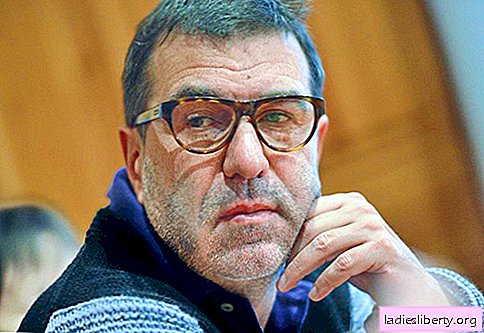
Holidays December 6
Catholic St. Nicholas Day
The season of Christmas holidays with Catholics opens on December 6 - the day of St. Nicholas, considered the patron saint of children and travelers. Not so many facts about his life have come down to our time, more and more legends - for example, about how he threw coins into shoes for poor children. Surely it was from this legend that the tradition went - on the night of December 6, children put their shoes over the threshold, and in the morning they discover gifts from St. Nicholas in it. Originating in Germany, this custom is distributed throughout Europe, where, although with different territorial features, it is still observed.
Day of the Armed Forces of Ukraine
In 1991, on December 6, the law "On the Armed Forces of Ukraine" was adopted, which proclaimed the foundation of a professional Ukrainian army. Two years later, in 1993, the President of Ukraine signed a decree appointing December 6 as a professional holiday for all military and other persons related to the army. The Ukrainian army has gone through difficult times; the process of its reform is still underway. However, on this day, all hardships are forgotten and the military has the opportunity to note involvement in such a noble profession.
Constitution Day in Spain
Spain is an ancient state, so perhaps many do not know that its constitution is very few years old. It was adopted on December 6, 1978 at a popular referendum, thereby putting an end to the Franco dictatorship. An interesting detail - Constitution Day is traditionally an open day in the Spanish Congress, so that anyone interested can see how deputies work in parliament.
Finland Independence Day
On December 6, 1917, the Finnish parliament decided to secede from Russia. Since then, this day is known to all Finns as Independence Day. The holiday is celebrated very broadly and on a grand scale - ceremonial services are always held, parades and processions take place on the streets, and in the evening everything will certainly end with festivities or more formal balls. The day begins without fail with the raising of the state flag - a symbol of independence; later cities are literally painted in the national colors of Finland.
The base of the capital of Quito in Ecuador
The inhabitants of Ecuador on December 6 celebrate the Day of the Capital - the city of Quito. The date of foundation was taken on December 6, 1534, when the Spanish conquistador Sebastian de Belalcasar entered the city. Quito is one of the most beautiful cities in South America, it is rightfully on the UNESCO World Heritage List. The day of the capital is always celebrated on a grand scale - sometimes celebrations last a whole week. The culmination usually becomes a special bullfighting, in which outstanding toreros from all over the world take part.
December 6th in the folk calendar
Mitrofanov day
Memorial Day Bishop Mitrofan of Voronezh, who lived in the XVII-XVIII centuries. The bishop actively fought against the Old Believers, advocated the development of Orthodoxy and the formation of the clergy, built new churches and for his work for the benefit of Christianity was ranked among the saints. On Mitrofanov, the day was traditionally watched by the weather and predicted what the summer would be like. If snow fell, the north wind blew, then the summer was promised windy and rainy. Also on this day, the peasants celebrated the formation of the toboggan run, in honor of which they organized cheerful festivities with pies and beer. The food was prepared by the whole village, and later rode along the newly-rolled roads.
Historical events December 6
December 6, 1492 - The expedition of Christopher Columbus discovered the island of Haiti.
December 6, 1492, 40 days after its first discovery (the island that Columbus called Juan, and we know how Cuba), the expedition of the famous navigator stumbled upon another beautiful island. It was decided to give him the name "Hispaniola" ("Spanish"), thus strengthening the right of the state to this new land. This discovery is noteworthy primarily because it was in Haiti that the first European colony in the New World was founded, which marked the beginning of a new milestone in world history.
December 6, 1768 - The first edition of Encyclopedia Britannica was released in Edinburgh
The Encyclopedia Britannica or, to use the full name, the British Encyclopedia, or the Dictionary of Arts and Sciences, compiled according to a new plan, is the oldest and most comprehensive universal encyclopedic publication in the world. It was founded in Edinburgh, Scotland, by engraver Andrew Bell and bookstore printer Colin McFarkar. The first edition, which was released in 1768, consisted of only three volumes - in the last, 15th edition, there are 32 volumes. These are about 32 thousand pages! The encyclopedia continues to be published and updated today, however, now publishers have decided to abandon the traditional format in favor of electronic.
December 6, 1921 - The Anglo-Irish Treaty of Independence of Ireland was signed.
The signing of this treaty was the culmination of the Irish War of Independence, which has been going on since 1919. According to its conditions, the Irish state was recognized as an autonomous dominion - that is, it did not leave the British Empire, but received the right to self-government. Later, in 1932, significant amendments were made to Irish laws and the status of the state changed, but it was the 1921 treaty that became the key stage in the process of world recognition of Irish independence.
December 6, 2000 - discovered a chemical element with atomic number 116 - Ununhexium.
This radioactive metal is now called Livermore, in honor of the American laboratory that participated in the discovery of the element. The name "Ununhexium" was temporary, formed from serial number 116. Officially, the element was synthesized at the Joint Institute for Nuclear Research, in the Russian city of Dubna, with the participation of the Livermore National Laboratory from the USA.
December 6 were born:
Nicolas Leblanc (1742 -1806), French chemical technologist.
Nicolas Leblanc is best known as the author of the world's first method of industrial production of soda, for which he received a prize from the French Academy of Sciences. This method was revolutionary for its time - LeBlanc was able to build a plant that produced more than 320 tons of product per year, which was an unprecedented scale for the 18th century.
Joseph Louis Gay Lussac (1778-1850), French chemist and physicist.
He studied with Claude Bertollet in Paris, later was his assistant. Perhaps the most famous are his studies in the field of physics (Gay-Lussac gas law) and chemistry (properties of halogen compounds, alkali metals, boron and boric acid, etc.). However, the achievements of Gay-Lussac do not end there, he was a very fruitful scientist - he perfected the methods of volume analysis, invented a new method for producing sulfuric and oxalic acid, as well as a new method for producing candles. The name of Joseph Gay-Lussac is included in the list of the greatest scientists of France, which can be found on the ground floor of the famous Eiffel Tower.
Frederic Basil (1841 - 1870), French artist.
The famous artist Frederic Bazil is considered one of the founders of such a direction in painting as impressionism. He studied in Paris, where he first met with Claude Monet, and later with Auguste Renoir, Paul Cezanne, Alfred Sisley. Basil died in the war at the age of only 28, but left behind a significant cultural heritage that influenced the development of painting in the future. The most famous paintings of the artist are stored in the Musée d'Orsay, in Paris - among them are “Pink Dress”, “With the Family”, “Workshop on 9 La Condamine Street, in Paris”.
Nikolai Mikhailovich Amosov (1913 - 2002), Soviet and Ukrainian surgeon, medical scientist.
The famous cardiac surgeon, academician and hero of labor Nikolai Amosov was born on December 6, 1913 in the village of Olkhovo, in the family of an employee. Amosov is known as the author of many innovative and revolutionary techniques, which has published a number of books (both specialized and popular science). In addition to cardiac surgery, Amosov worked on issues such as artificial intelligence, gerontology, and social engineering. For services to society he was called "the man of the century in Ukraine."
Mikhail Sergeevich Evdokimov (1957-2005), entertainer, film actor, comedian.
Mikhail Evdokimov earned fame as a film actor thanks to his roles in films such as "Don't play the fool" and "Could you send us a messenger?" , "Old nags." However, fans of the humorous genre managed to get to know him even earlier - the artist performed a lot in the popular program “Around the Laughter” with monologues and parodies. In 2004, Evdokimov won the gubernatorial elections in the Altai Territory, but his political career was not very successful. And after only a year, the actor tragically died in a car accident.
Nick Park (1958), British animator.
Perhaps not everyone knows the name of Nick Park, but his main brainchild - the hilarious cartoon characters of Wallace and Gromit - everyone knows for sure. In addition to a series about the adventures of the unlucky inventor and his faithful dog, Park participated in the creation of such famous cartoons as "Chicken Run" and "Shaun the Sheep". His characteristic style of plasticine animation cannot be confused with anyone else.
Name day on December 6th:
Alexander, Alexey, Boris, Gregory, Mitrofan, Fedor, Maxim, Nikita, Ruslan











